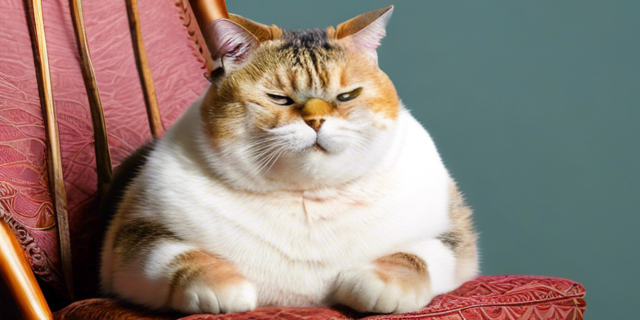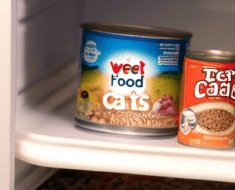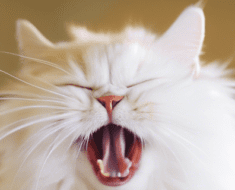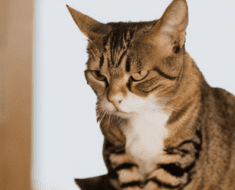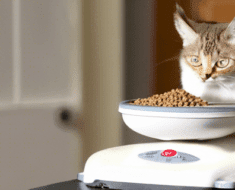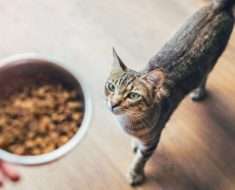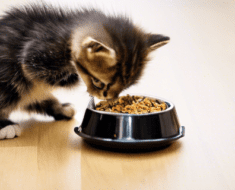Your cat may be overweight due to overeating or lack of exercise.
Is your cat tipping the scales a bit too much? Many factors can contribute to your feline friend packing on extra pounds, from overeating to a sedentary lifestyle. Whatever the reason, it’s crucial to address your cat’s weight issue promptly to ensure their overall health and well-being.
We will explore why your cat may be overweight and provide practical tips on how to help your furry companion shed those unwanted pounds. By implementing a healthy diet and encouraging more physical activity, you can support your cat in reaching a healthy weight and enjoying a happier, healthier life. Let’s dive in and learn how to trim down your chubby kitty!
Understanding Feline Obesity
|
Feline obesity is a common issue among cats today. Causes: Overeating and lack of physical activity contribute to cat obesity. Risks: Health issues like diabetes and joint problems are associated risks. |
Assessing Your Cat’s Weight
Assessing Your Cat’s Weight:
How to Determine if Your Cat is Overweight: Look for visual cues, feel for a rib cage.
Body Condition Scoring for Cats: Use a body condition chart to assess fat distribution and overall body shape.
Creating A Weight Loss Plan
Consulting a Veterinarian: Before implementing a weight loss plan for your cat, it’s crucial to consult a veterinarian. They can assess your cat’s overall health, identify any underlying medical conditions, and provide tailored recommendations for safe weight management.
Feeding Guidelines for Weight Loss: When creating a weight loss plan for your cat, focus on providing high-quality, portion-controlled meals. Opt for a balanced diet that prioritizes lean protein and minimizes calorie-dense treats. Consider incorporating interactive feeding toys to encourage physical activity while eating.
Increasing Physical Activity
Cat obesity is a common concern for pet owners. To help your overweight cat lose weight, increasing physical activity is important. Engaging your cat in indoor exercise options can be a fun way to promote weight loss. Interactive playtime ideas can provide mental stimulation, increase muscle movement, and help burn calories. Consider playing with your cat using interactive toys such as laser pointers, feather wands, or puzzle feeders. These toys can keep your cat active and entertained. Another option is to create obstacle courses using furniture or scratching posts. Encourage your cat to jump, climb, and explore. Regular play sessions of 10 to 15 minutes a few times a day can have a positive impact on your cat’s physical health. Providing vertical spaces like cat trees or shelves also enables them to engage in natural behaviors.
| Benefits of Indoor Exercise |
|---|
|
|
|
Monitoring Progress And Adjusting
When it comes to monitoring your cat’s weight loss progress, it is important to track their weight regularly. This can be done by using a scale specifically designed for cats, or by visiting your veterinarian for regular weigh-ins. By tracking their weight, you can evaluate whether the weight loss plan you have in place is effective and adjust it as needed.
In addition to tracking weight loss, you should also pay attention to other signs of progress. Look for changes in your cat’s body shape and appearance, such as a more defined waistline or less fat around the ribs. Monitor their energy levels and overall activity level, as weight loss should result in increased energy and playfulness.
If you notice that your cat’s weight has plateaued or that they are not losing weight as expected, it may be necessary to adapt the plan. Please consult your veterinarian to discuss potential adjustments, such as altering their portion sizes or switching to a different weight management diet. Remember, weight loss should be gradual and steady to ensure the health and well-being of your cat.
Frequently Asked Questions Of Why Is My Cat Fat- Helps Lose Weight
What should I do for my cat to weight lose?
Help your fat cat lose weight by feeding measured portions, offering regular exercise, and consulting with a vet for a tailored diet plan.
How Can I Reduce My Cat Belly Fat?
To reduce your cat’s belly fat, limit treats, increase exercise, and monitor food portions. Consult a vet for tailored advice.
Why Did My Cat Go From Fat To Skinny?
Your cat may have gone from fat to skinny due to health issues or changes in diet and activity level.
Why Is My House Cat So Fat?
Your house cat may be fat due to overeating and lack of exercise. Feeding high-calorie foods can also contribute.
Why Is My Cat Overweight And How Can I Help It Lose Weight?
Cats can become overweight due to a sedentary lifestyle and overfeeding. To help your cat lose weight, ensure proper portion control, encourage exercise, and consult your veterinarian for a balanced weight loss plan.
Conclusion
Helping your cat lose weight is crucial for its health. By introducing a balanced diet, regular exercise, and monitoring portion sizes, you can effectively combat feline obesity. Remember, consulting a veterinarian is essential for tailored advice. With dedication and patience, you can improve your furry friend’s well-being.
